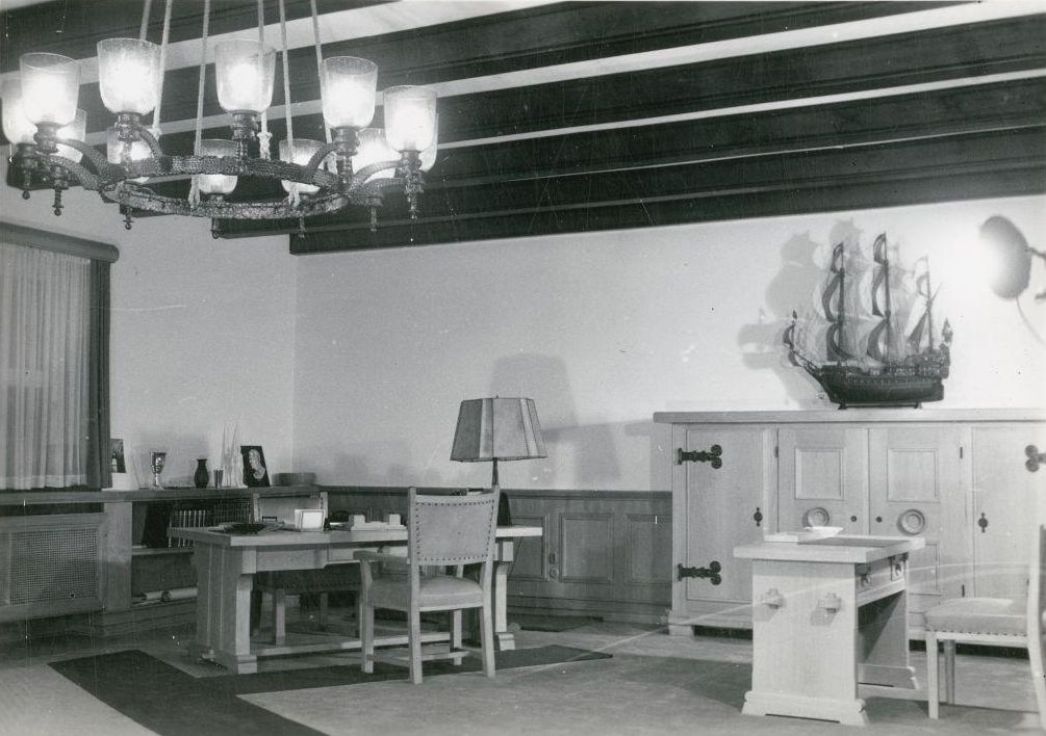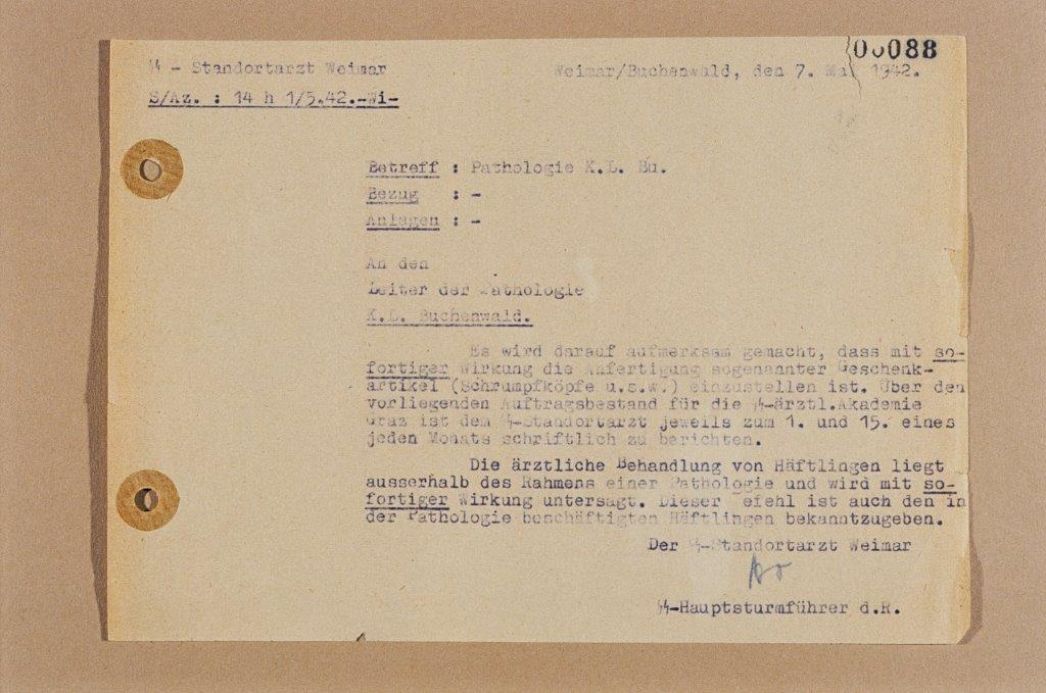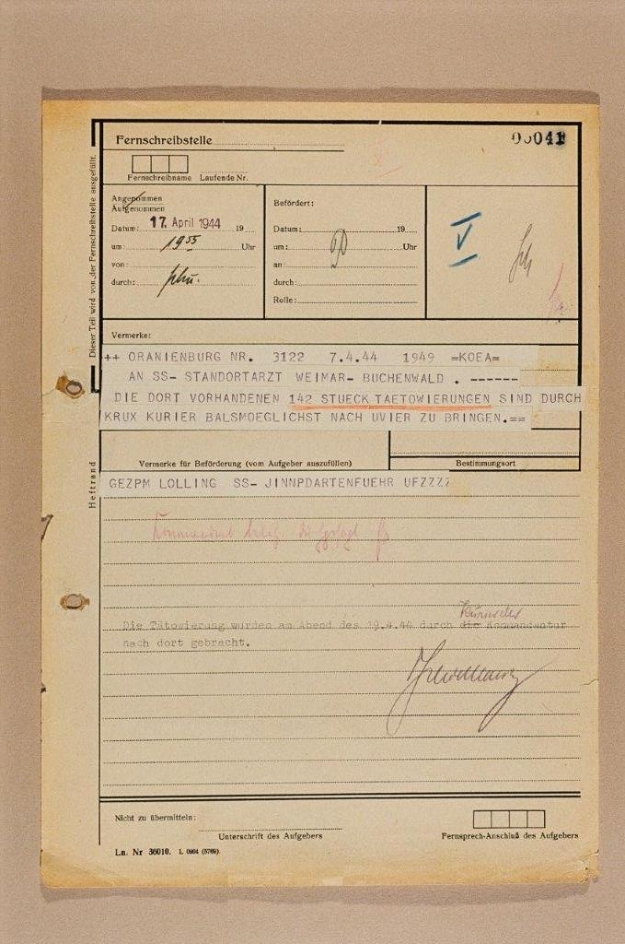
In 1940, the SS set up the pathological department at Buchenwald concentration camp. It was subordinate to the SS camp doctor and produced, among other things, show specimens, e.g. for the SS Medical Academy in Graz.
Erich Wagner had been working as an SS camp doctor in Buchenwald since 1939. In 1940, he received his doctorate from the Medical Faculty of the University of Jena with his thesis "A contribution to the tattooing question". The socio-racist thrust of the thesis is clear from the introduction: tattoos were to be regarded as a "sign of low cultural status and inferior intelligence".
There is no doubt that Erich Wagner used this forensic biology approach to select and kill tattooed prisoners in order to use their skin as illustrative material. At the same time, hundreds of the prepared skins were turned into everyday objects for the SS. The human remains were thus also "trophies" for the SS men, who had become masters of life and death.
The Austrian prisoner chaplain of the pathology department, Gustav Wegerer, reports:
"It was Müller who gave the order to remove tattoos from the bodies of deceased prisoners and to make lampshades from this skin. He referred to an order from Berlin when he passed this order on to me. Hundreds of pieces of tattooed skin, tanned in various ways, were repeatedly transferred to the head of Office D III of the economic and administrative apparatus in Berlin, Obersturmführer Lolling. [...] Müller commissioned Stöckel and Werner Bach through me to make pocket knife cases and other objects from this tanned skin."
This production of everyday objects as trophies took on such proportions that the site doctor Waldemar Hoven felt compelled to prohibit the production of "so-called gift items (shrunken heads, etc.)" after Müller's departure in 1942.
Nevertheless, the tanning of tattooed skin was continued. As late as 1944, Enno Lolling, the superior of all camp doctors in the SS Economic and Administrative Main Office, immediately demanded that the Buchenwald SS site doctor Schiedlausky dispatch the "existing 142 tattoos".




